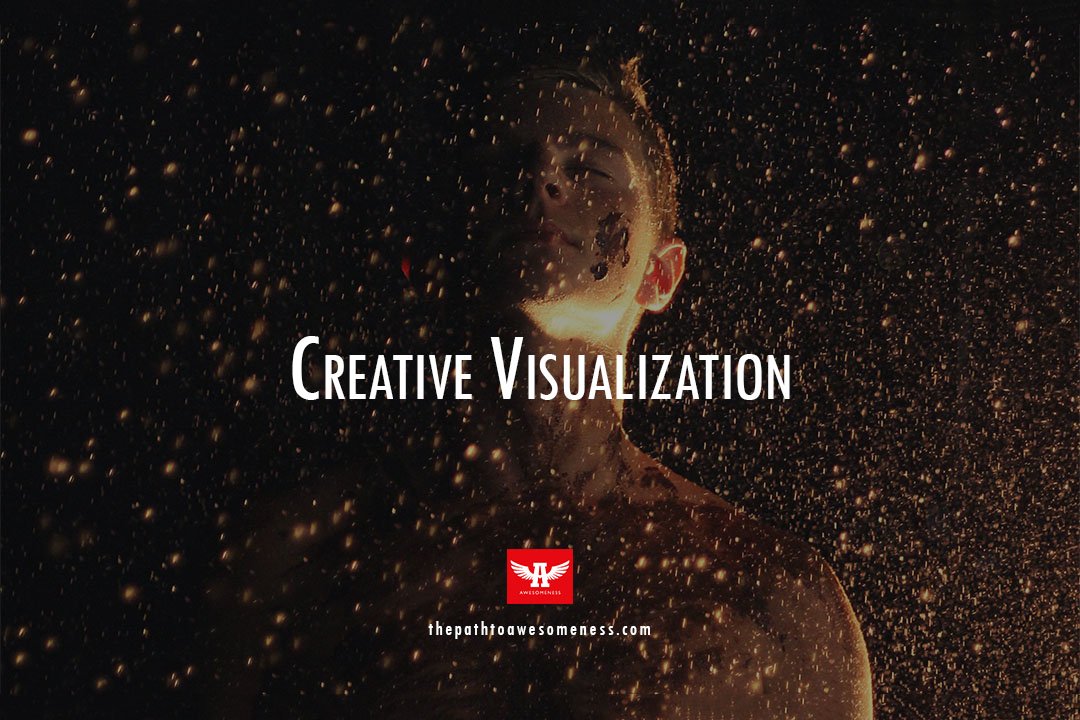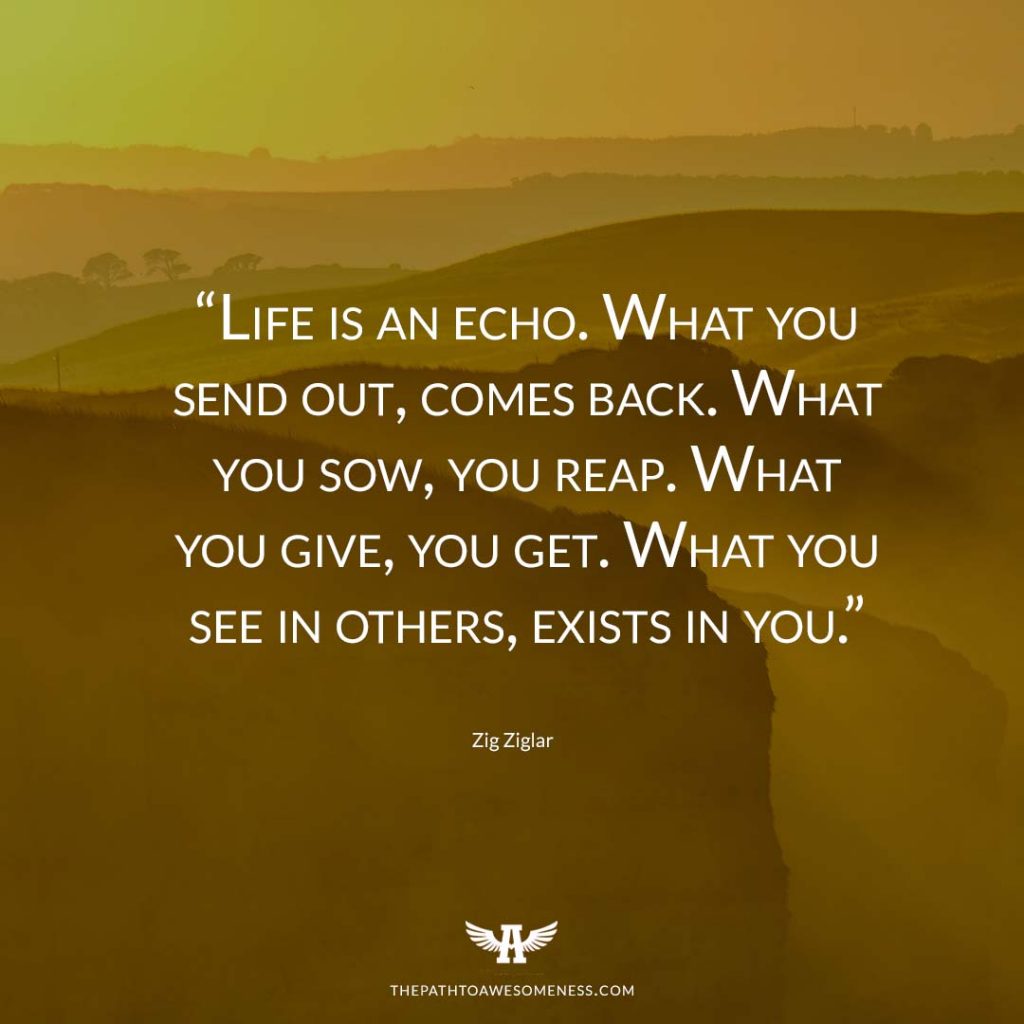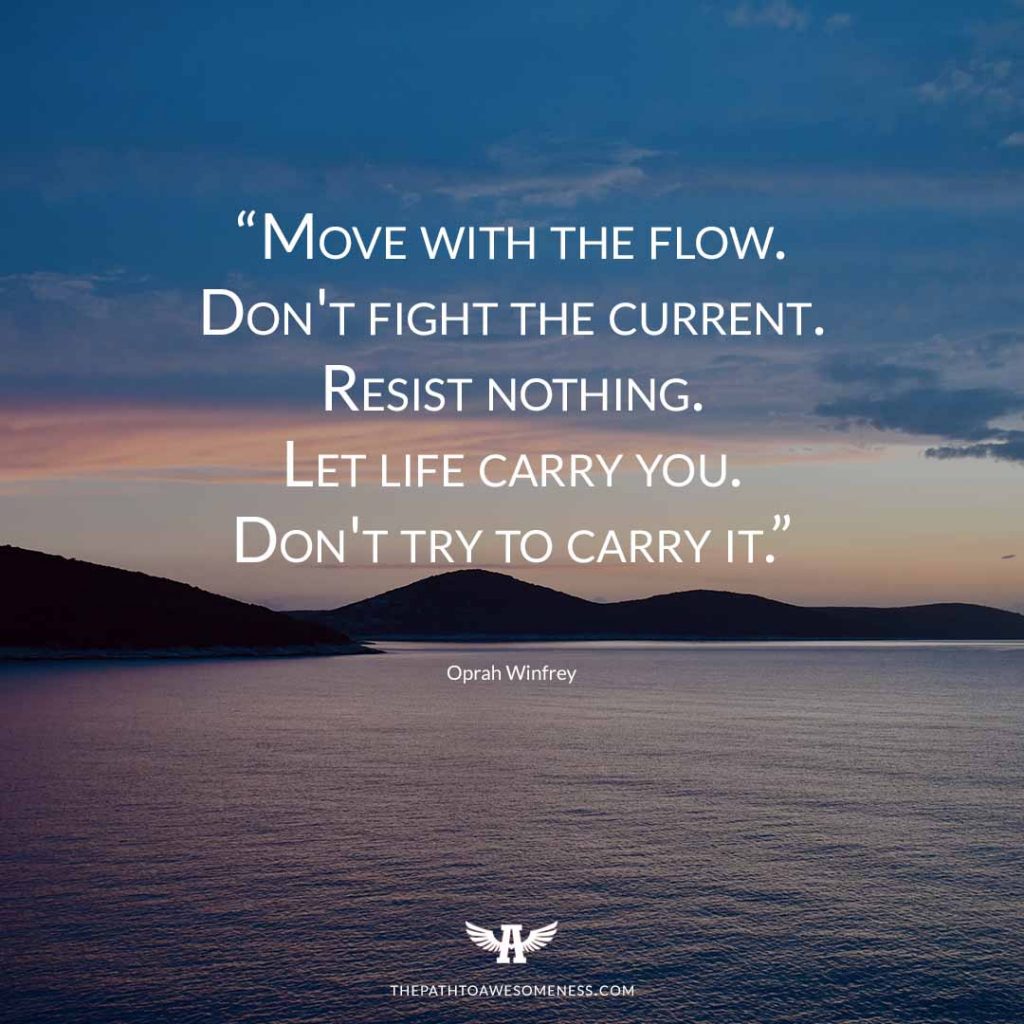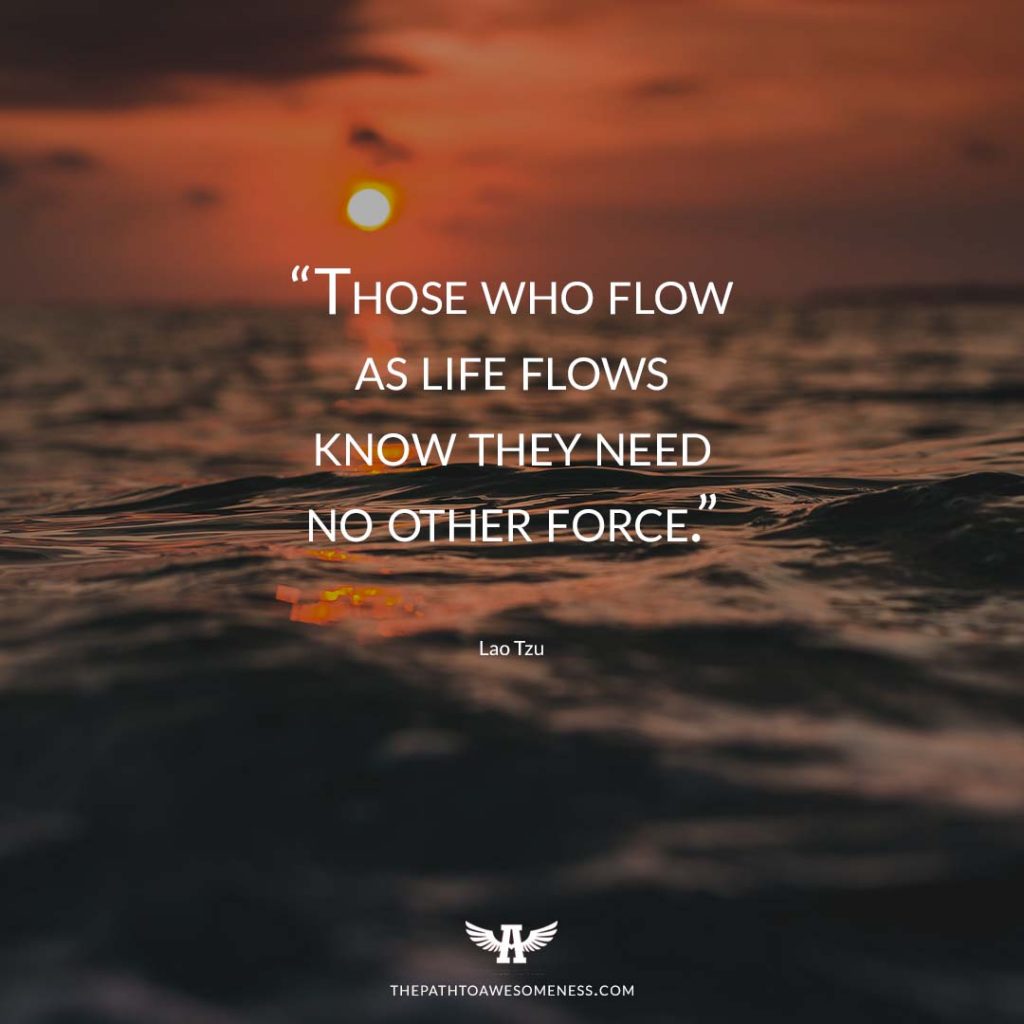
That is the ultimate point of creative visualization – to make every moment of our lives a moment of wondrous creation, in which we are just naturally choosing the best, the most beautiful, the most fulfilling lives we can imagine. – Shakti Gawain
If you’re looking for a book that is a chunk load of meditation exercises and affirmations, Creative Visualization is surely a treat for you. As Shakti mentioned in the foreword section, she wanted to teach everything she has learned about creative visualization and how it has impacted her own life. And as you read through the book, you would get the impression of having a teacher-student relationship with her.
So, what is Creative Visualization? It is a technique of using our imagination to create what we want in life. It is consciously imagining what we want, and giving it our focused attention with a positive feeling until it becomes a reality.
Shakti adds that it involves understanding and aligning ourselves with the natural principles that govern the workings of the universe, and learning to use them in the most conscious and creative way.
Let’s check in with what’s in store for us.
As You Sow, So Shall You Reap
What this means from a practical standpoint is that we always attract into our lives whatever we think about the most, believe in most strongly, expect on the deepest levels, and/or imagine most vividly.
Everything in our physical reality was at first a thought or an idea. We always create something first in thought form. A thought or idea always precedes manifestation. “In the beginning was the word.”
Everything is energy, which vibrates at different speeds. Thought is a finer form of energy, easy and quick to change. Matter is a denser form, and therefore slower to change or move.
Do you know one of the perks of having a human experience being in the physical world? By living in contrast, we get to refine our thoughts, so we can get clearer on what we really want before they manifest in our physical reality.
Imagine if we thought of a bad thing and it manifests instantaneously. Considering the nature of our human mind, which is inclined to negative thinking, the human species would have long been extinct by now.
Thank goodness, there is a “buffer time” in-between manifestations. Thoughts become things, but manifestations take time. The seeds we plant today will not instantly become full-grown trees tomorrow, and we can’t also expect them to bear fruits right away the following day.
But sure enough, if we plant good seeds (thoughts) today and we nurture them every day with loving attention and care (good feelings), and uproot the weeds (limiting beliefs) to keep our soil (consciousness) healthy, coupled with gardening practices (inspired action), we can expect a bountiful harvest (things we want) when the right season (Divine timing) comes.

Relax and Visualize
It’s important to relax deeply when you are first learning to use creative visualization… What this means for our practical purposes is that if you learn to relax deeply and do creative visualization, you may be able to make far more effective changes in your life than you would be thinking, worrying, planning, and trying to manipulate things and people.
Sounds counter-intuitive? Welcome to spirituality. 😀 Welcome to where less is more, where ease and simplicity are the flow of life.
I’m with you on this. I’ve been an action-oriented guy for the most part of my life. And don’t get me wrong, action still has a place in my creative process – last place. Alignment comes first. When that comes first, inspiration flows and action feels almost effortless. And the results often come faster and better than if I force things my way. ‘Striving’ turns into ‘thriving’.
Shakti suggests a practice of breathing slowly and deeply, relaxing each muscle in the body in turn with a count down from ten to one slowly. This helps put our mind at the alpha level, which is most conducive for creative visualization purposes.
She advises to do creative visualization at night just before sleeping, or in the morning just after awakening, because those times are when the mind and body are most relaxed and receptive.
The Culprit
Usually a person blocks his ability to use creative visualization out of fear of what he may encounter by looking inside himself – fear of his own unacknowledged feelings and emotions.
Shakti pointed out a very good observation here. Feelings, the essential key to manifestation, are what we mostly fail to recognize, which blocks our creative capabilities.

To rephrase, “Where your heart is, there is your treasure.” Most people wouldn’t want to search for their treasure because it requires looking into their hearts, which leads to inquiring feelings and revealing buried emotions. To examine our pains and fears requires vulnerability, which is often perceived by many as a weakness.
The truth is, as Shakti said, there is nothing within us that can hurt us. It is only our fear of experiencing our feelings that can keep us trapped.
The best way we can deal with our feelings is to face them fully, be with them, and experience them as much as we can. If we have the courage to do so, we will find that eventually, they will lose any negative power over us. And what comes forth is our true power.
Marianne Williamson puts it poignantly, “Our deepest fear is not that we are inadequate. Our deepest fear is that we are powerful beyond measure.”
4 Basic Steps of Creative Visualization
There are four basic steps in Creative Visualization:
-
- Set your goal.
Decide on something you would like to have, work toward, realize or create. It is important to get as clear as possible with what you really want. To begin with, choose goals that are easy for you to believe in, that you feel have a greater possibility of happening. This lessens the resistance you may feel toward your goals. As Abraham Hicks teaches us, manifesting is all about allowing. - Create a clear idea or picture.
Again, the clearer you can get with what you want, the better. Getting more specific adds intensity and momentum. You should think and feel as if it were already happening in your experience. - Focus on it often.
Bring the idea of what you want often to your awareness as often as possible throughout the day so it becomes integrated into your life. But do it in a light manner, not forcing anything. - Give it positive energy.
Think about your goal in a positive, encouraging way. Never want anything out of desperation. Always come from the place of inspiration. The objective is to feel good consistently. If the idea of what you want makes you feel anxious, turn your attention away from it until you can get back to the good feeling.
- Set your goal.
Creative Visualization with Affirmations
Affirmations are one of the most important elements of creative visualization. To affirm means “to make firm.” An affirmation is a strong, positive statement that something is already so. It is a way of “making firm” that which you are imaging.
There is nothing much we can do about the negative thoughts that keep popping in our heads. We cannot erase them. Our ego-mind is a pessimist and fear-based by default.
What we can do though is create new thought patterns that are empowering and shift our attention to them. That’s what affirmations can do for us.
Affirmations don’t necessarily have to be goal-related and specific. As with any practice, the key is consistency for them to take effect.
Here are some of the affirmations provided in the book:
-
-
- Every day in every way I’m getting better and better.
- Everything I need is coming to me easily and effortlessly.
- My life is blossoming in total perfection.
- I am whole and complete in myself.
- I love and appreciate myself just as I am.
- I love to love and be loved.
- Abundance is my natural state of being.
- I am relaxed and centered.
- I have plenty of time for everything
- I feel happy just being alive.
- I am healthy and beautiful.
- I am open to receiving all the blessings of this abundant universe!
- All things are now working together for good in my life.
-

Shakti also reminds us when making affirmations as follows:
-
-
- Always phrase affirmations in the present tense, not in the future.
Use “I am” or “I have” instead of “I will be”. Affirm as if it already exists. - Always phrase affirmations in the most positive way you can.
Don’t say “I’m not nervous.” Instead, say “I am calm and relaxed.” - The shorter and simpler the affirmation, the more effective.
Use affirmations that convey a strong feeling. Feelings are what impress the thoughts on the subconscious mind. Statements that are long and wordy tend to be mental rather than emotional. - Always choose affirmations that feel totally right for you.
As Abraham Hicks says, affirmations that have a huge vibrational gap with what you are currently feeling may become counterproductive. Just go for the thought that gives you relief. Then you can move up the emotional scale from there. Make strong affirmations only when you feel you are already in positive momentum. - Always remember that you are creating something new and fresh.
You are not resisting what is. Accept what is, then from there you create what you want to experience next. - Affirmations are not meant to contradict or change your feelings or emotions.
Every feeling, including the “negative” ones, is meant to be felt and experienced. Those “bad” feelings are what make positive emotions feel so good. - Try as much as possible to create a feeling of belief, an experience that your affirmations can be true.
Try to feel the affirmations. Try getting into the feeling that you really have the power to create your reality. Because in reality, you do!
- Always phrase affirmations in the present tense, not in the future.
-
The Path to Awesomeness Starter Kit makes affirmations easier for you. Just plug in your earphones and listen to them every day. Each set is tailored to each day of the week to work on different aspects of your life. It plays healing music in the background to amplify the power of affirmations.
A Spiritual Paradox
This is the state of being from which most of us are setting goals and trying to create what we want in life, and unfortunately from this level of consciousness it doesn’t work at all. Either we set up so many obstacles for ourselves that we can’t succeed, or we do succeed in reaching our goals only to find that they don’t bring us inner happiness.
The spiritual paradox we are referring to here is between mindfulness, which teaches being present in the now and giving your full attention to the moment, and creative visualization, which teaches us to imagine and bring your attention to what you want to have in the future.
Shakti says that conflict sets in when we are setting goals from an empty, grasping, and manipulative condition. It’s when we think that happiness or success is something outside of ourselves that we have to reach out for. Because of this emptiness we feel, we strive and struggle so hard in the hopes of filling the gap.
This is what being in the now means: to stop struggling, stop trying so hard, stop manipulating things and people, stop doing so much, and have an experience of just being in the moment.
To make it simpler, it’s about setting goals but letting go of the outcome. It’s about being content and grateful for what you have, yet allowing yourself to have more. It comes from a knowing that what you want will come to you in perfect Divine timing, so you enjoy whatever experience you have at the present moment, and you make the best of it.
Shakti sums it up with a metaphor of life being like a river. It’s about going with the flow and enjoying the journey while you are heading toward your destination. It’s how we can flow with what is, and at the same time guiding ourselves consciously toward our goals by taking responsibility for creating our own lives.
Being, Doing, and Having
The purpose of creative visualization is to connect us with our being; to help us focus and facilitate our doing; to deepen, expand, and align our having.
I love how simple Shakti presented this paradigm in the book.
She said that people often attempt to live their lives backward: they try to have more things, like money, in order to do more of what they want, so they will be happy.
This is how the ego operates in us because it has no sense of being. So in order to be, it strives to have more and do more. The more you have, the more you think you are. The more you do, the more you think you are. If you have nothing and you do nothing, you think you are nothing. That’s the way the ego thinks.
The way it actually works is the reverse, Shakti said. We must first be who you really are, then do what you need to do, in order to have what you want.
God did not introduce Himself as “I am what I have,” nor “I am what I do.” He said, “I am that I AM.”
As Tony Robbins declares, “Know thy self. And then BE thy self.”
Your Spiritual Source
One of the most important steps in making your creative visualization work effectively and successfully is to have the feeling of being connected with your inner spiritual source.
All these ‘spirituality’ stuff we’re doing: creative visualization, meditation, affirmation, and the many other practices and teachings are really about being connected with our inner spiritual source.
Or even if you don’t consider yourself spiritual, there is that deep yearning in you of becoming something bigger or greater than just what you are. You feel that there is something more.
Because what we are all deeply longing for is connection. It stems from the preconceived notion of our separateness, from God, from ourselves, and from others.
As mentioned previously, the primary purpose of creative visualization is to connect us with our being. That connection is what brings us feelings of love, joy, enthusiasm, and all that awesomeness. And it’s those feelings that bring about the manifestation of our desires.
Shakti said that the connection is a two-way channel and it is important to develop the flow in both directions.
Receptive: this happens during your relaxed state, like with meditation. You open the channel for wisdom and guidance which comes through words, mental images, or feeling impressions.
Active: when you become a co-creator of your life experience. You make choices about what you desire to create and you channel the creative energy through active visualization and affirmation.

Go With the Flow
That means that you don’t have to exert effort to get where you want to go; you simply keep clearly in mind where you would like to go, and then harmoniously follow the flow of the river of life until it takes you there. The river of life sometimes takes a winding course toward your goal. It may even seem temporarily going in a different direction entirely, yet in the long run it is more effortless and harmonious way to get there than through struggling and striving.
Going with the flow means holding on to your goals but letting go of how and when they will manifest in your life.
As Abraham Hicks always reminds us, the path to our desires is a path of least resistance. We don’t make them happen. We allow them to happen.
Allowing them to happen means things may go their way not as we planned them. Shakti encourages us to be willing to change them if something more appropriate and satisfying comes along. It’s even being willing to change your goals if life starts taking you in a different direction.
Going with the flow does not entail laziness, nor complacency. You just learn a better way of doing things because your actions are divinely guided. You learn to act in alignment with your higher self. You learn to cooperate with the laws that govern how the Universe works, which is really opposite to what we have been led to believe.
By experience, life itself will make you understand how it works. It’s a process. Gradually, as you learn to trust more, you will be more willing to let go. Then, along the way, you will start to realize that life is truly happening FOR you, if you only allow it.
A Creative Visualization Notebook
There are many creative ways to use your notebook, such as recording your dreams, goals, and fantasies, keeping a journal of your progress with creative visualization, writing down inspiring thoughts and ideas, or quotes from book and songs that are meaningful to you, drawing pictures, or writing your own poems and songs that express your expanding awareness.
This serves as your workbook, much like a journal. And if you haven’t already started journaling, it’s a great time to start now. This is one tool in which you can develop a relationship with yourself and your higher self.
Here are Shakti’s personal recommendations for your notebook:
-
-
- Affirmations. Write down your favorite affirmations. Writing helps instill those positive thoughts into your subconscious mind.
- Outflow list. This is a list of all the ways you can outflow your energy to the world. It can be money, time, a token of appreciation, your special talents and abilities, or whatever you can think of giving.
- Success list. Make a list of everything you feel you are a success at, or have been successful at some time in your life. It helps boost your self-confidence.
- Appreciation list. What are the things you are thankful for? They can help open up your heart and your awareness to things that we usually take for granted. It helps you focus on abundance and prosperity.
- Self-esteem list. What are the qualities you like about yourself? Acknowledge them because you deserve it. You are worthy.
- Self-appreciation list. What are the ways you can be good to yourself? The nice things you can do and give to yourself? These are your ways of loving yourself.
- Healing and assistance list. Who are the people who need healing? You can write affirmations for them. This way, you can send them healing energy and assist them in their healing.
- Fantasies and creative ideas. Write any idea, plan, or goal you have for the future. This will help stimulate your imagination and your natural creative ability.
-
Shakti says that ultimately, creative visualization will lead us to our higher purpose. And our ability to manifest is proportionate to the degree of our alignment with our higher purpose.
Things may or may not happen your way. But no matter what, know that everything is unfolding perfectly for the greater good.
Life always is, for you.
Creative Visualization: Use the Power of Your Imagination to Create What You Want in Your Life
PS: Thank you for taking the time to read. Tell me, what insight most resonated with you?
ABOUT THE AUTHOR
SHAKTI GAWAIN is a pioneer in the field of personal development. For over twenty-five years, she has been a best-selling author and internationally renowned teacher of consciousness. Shakti has facilitated thousands of individuals in developing greater awareness, balance and wholeness in their lives.
Her books have sold over 10 million copies and have been translated into more than thirty languages. She is the co-founder, with Marc Allen, of New World Library Publishing Company.






